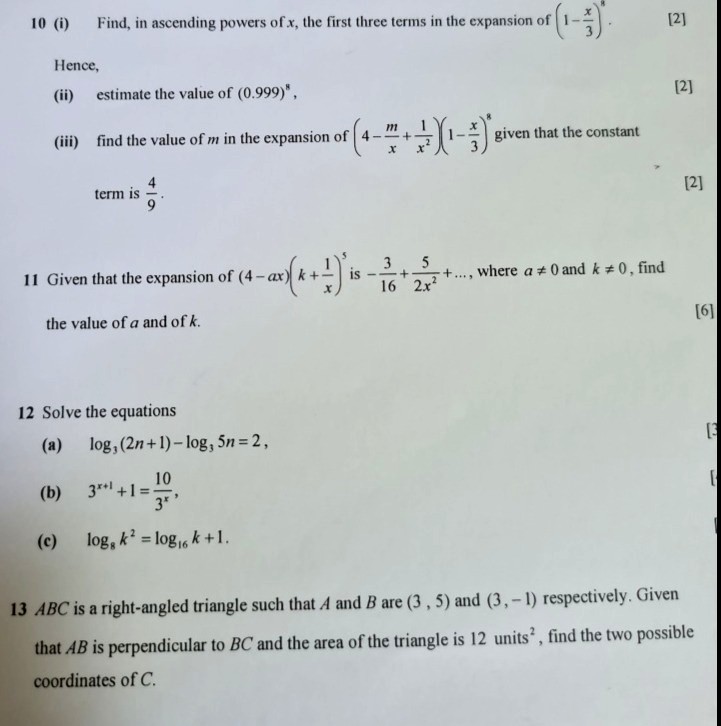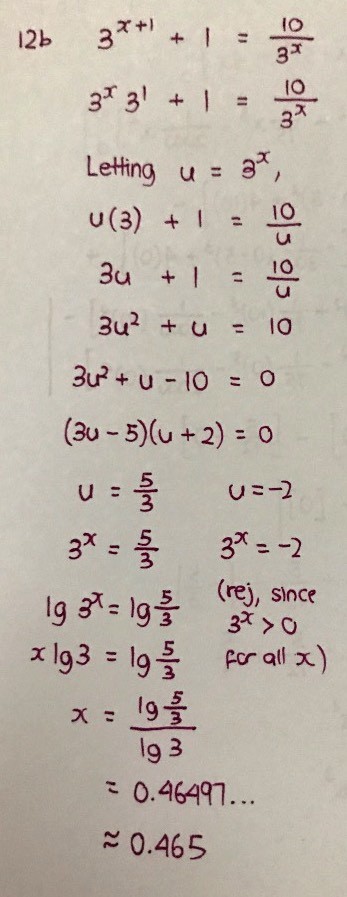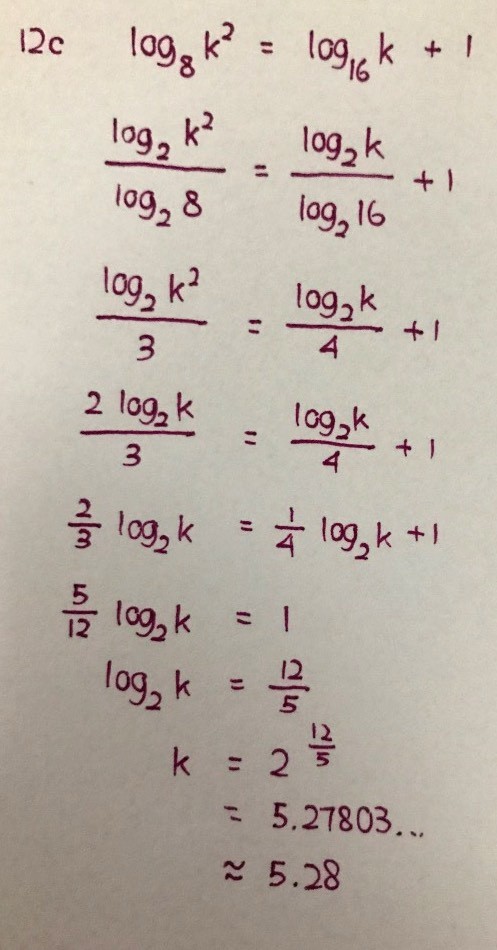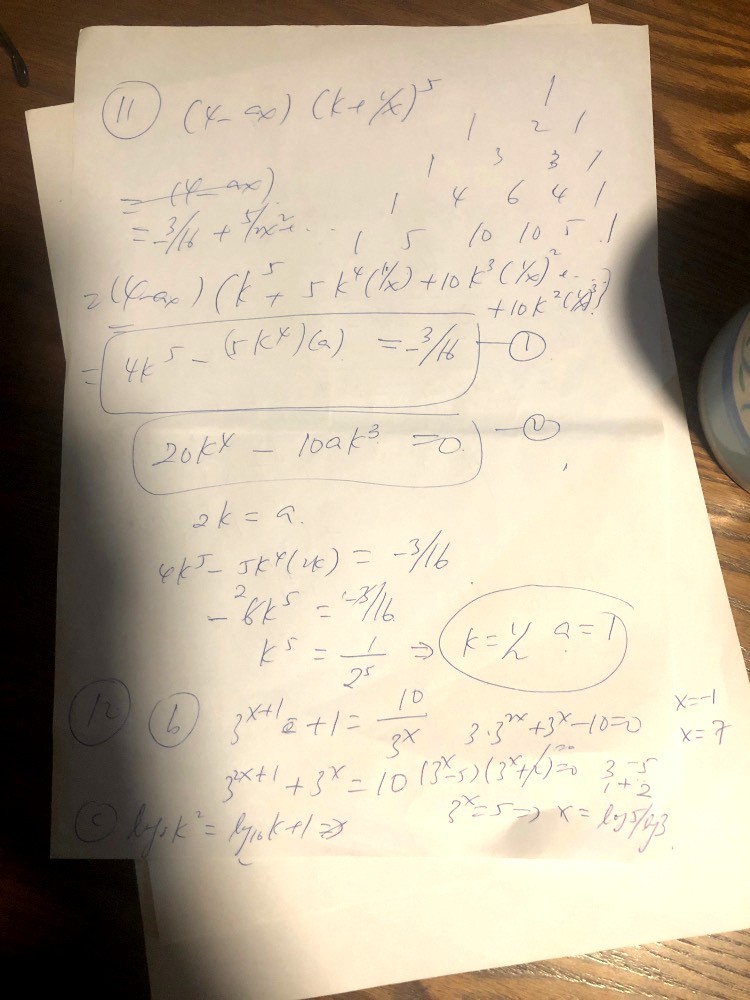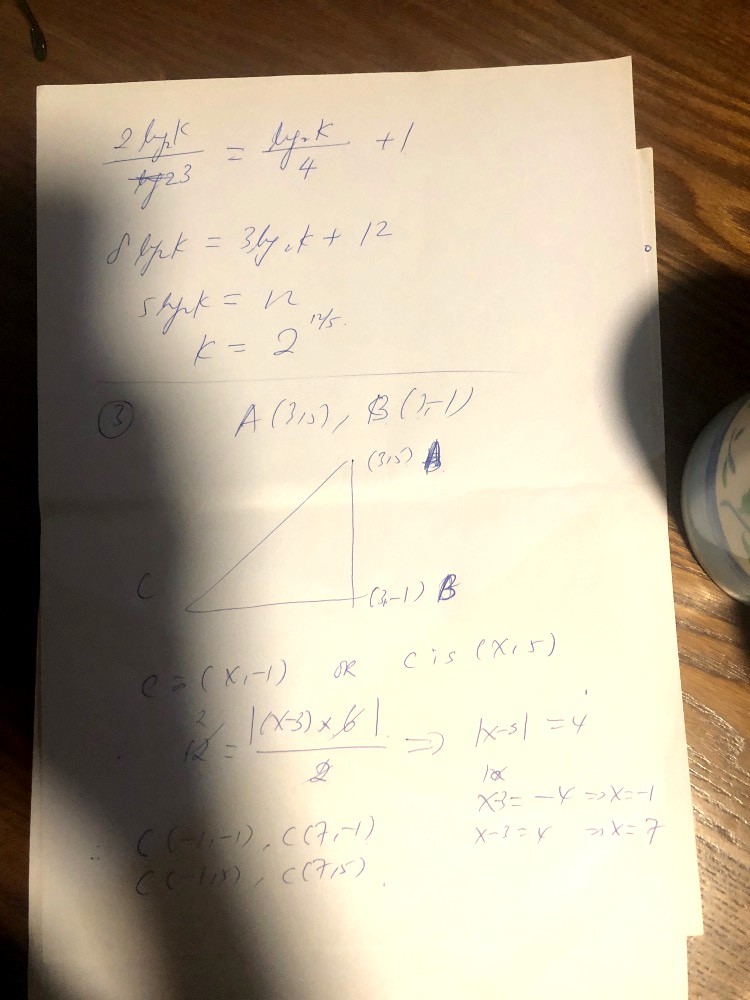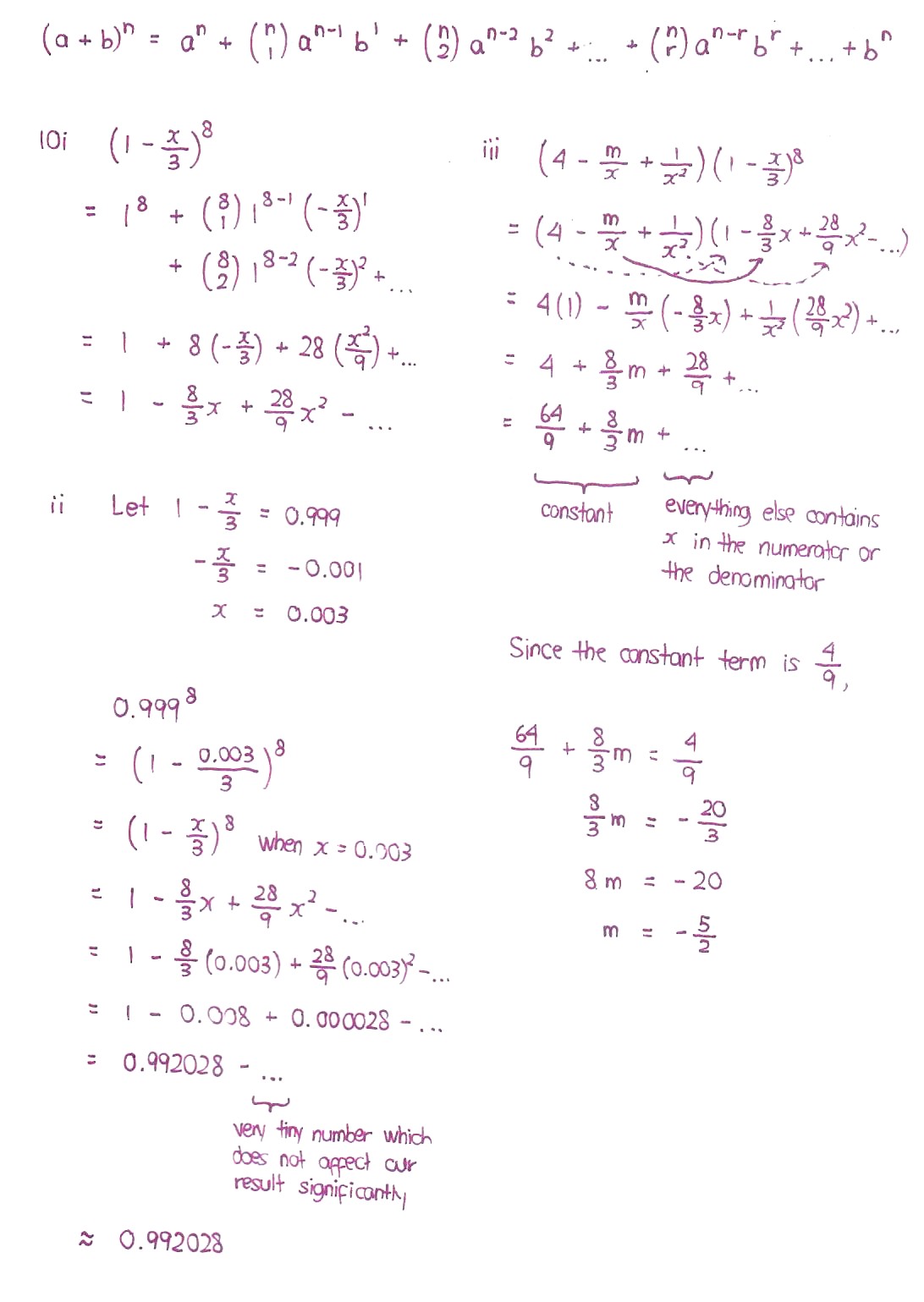Ask Singapore Homework?
Upload a photo of a Singapore homework and someone will email you the solution for free.

Question
secondary 3 | A Maths
8 Answers Below
Anyone can contribute an answer, even non-tutors.

need help with all qns except for 12a
very confused with logarithms and binomal theorem so pls explain too :)
See 8 Answers

This is because the question did not state "the first few terms in the expansion of...", but only stated "the expansion of...".
The problem is that if we were to rearrange our expression in descending powers of x from the start, the first term would be -ak^5 x. And because the starting expression at the end is given to be -3/16 (no term in x provided), then -ak^5 would be taken to be zero, but we are given that a and k are non-zero numbers, so the two data pieces are in conflict with each other (one says that -ak^5 must be zero while the other says that neither a nor k is 0).
So, we cannot say that the term -ak^5 x and the term in 1/x is zero. They could be well hidden within the expansion because of this, so we cannot make the assumption that the coefficient of 1/x would be zero.
It turns out to be the case though, but in any case I find this question very badly set. The setter did not put this clearly enough.
i am very bad at binomial theorem as i find it extremely confusing and most of the time i dont really know what is going on in this topic...
In my expansions in the first few lines (before the part "since the constant term is -3/16..."), I expanded the expression for (4 - ax) (k + 1/x)^5 to the desired power of 1/x^2 and grouped the expressions according to the relevant power of x (so I will not have two separate terms in a given power of x later on).
The part "since the constant term is -3/16..." requires us to make comparisons with the relevant powers.
In reality, the question should have mentioned "given that the first two terms in the expansion of". With this, we can deduce that the reason why they skipped the term in 1/x at the end is because the term has zero coefficient.
This part onwards leading to the value of a and of k is basically equating and solving for a and k.
sorry if i ask too much questions out of a sudden because i have add maths exam on monday...
like subbing u into 3^x
can you explain to me change of base fornula? will really appreciate it :)
The solving of the exponential part can be solved by taking logs on both sides. It’s not really a change of base as the equation to solve, 3^x = 5, is not in logarithmic form. I took log to base 10 on both sides of the equation in this case.
You can also do a change of base, however, by noting that writing 3^x = 5 in the equivalent logarithmic form gets us x = log3 5, which we can then use change of base to base 10 to get lg 5 / lg 3 which you will then put in the calculator.
If the question says
“given that log2 x = k, express log4 x in terms of k”
Then base 2 is more appropriate.
btw we are allowed to add and subtract logarithmic forms?
For example,
log2 5 + log2 8 = log2 40.
Even things like log2 x + log2 x = 2 log2 x make sense, because this is just like k + k = 2k.
You can actually change the “1” to log16 16, but I decided to keep the 1 at the end so that I can convert the logarithmic form to exponential form. I always leave a number on one side (in this case, the number 1) for the calculation.
5/12 log2 x = 1
From here, by leaving the 1 on the RHS, we are almost ready to solve such equations by converting the form.
there was one question where i used units to solve but ended up with a wrong answer as it required us to find the actual length to continue solving the question
For each case the base of the triangle will be 4 units long.
are you free to take at look at some questions today as i have quite a few questions that i need help with, but if you are not free today then its ok


Use triangle property and right angle triangle
|x-3|
Not easy questions but worth to practise and you will know more
The rest I look another time
btw for questions like part iii, if the constant term does not contain x, we have to see which term in the expansion combined together will give a term that does not contain x, if it contain x or x^2 we have to see which term combines to give a term with x and x^2?
-------------------------------------
"if it contain x or x^2 we have to see which term combines to give a term with x and x^2?"
Yes, you will have to compare the corresponding expressions.

